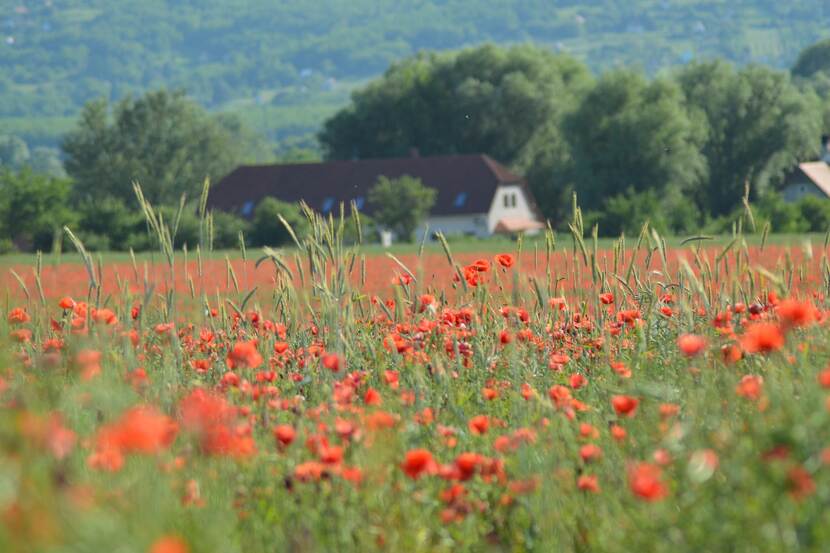Hungary: €12.95 billion in agriculture subsidies until 2027
The new figures on agriculture subsidies and co-financing, new statistics are available on renewable energy, land prices continue to increase and a low interest in sustainable solutions - Our weekly briefing on agriculture, food and nature news in Hungary

Renewable energy sources accounted for 11.7% of consumption in 2021
Last year, two-thirds of the Hungary’s energy consumption was provided for from using primary fossil fuels, 15% by nuclear power and 12% by primary renewable sources.
The portal AgroNapló reports that out of fossil fuel sources, the use of coal and coal products decreased by 18.3%, while the use of oil and petroleum products increased by 8.7% and natural gas by 6.1% compared to the previous year.
The use of primary renewable energy sources increased by 9.2% in 2021 compared to the previous year.
In 2021, the share of energy produced from renewable energy sources in gross final energy consumption was 14.1%. Residential makes up roughly 30% of the country’s total domestic energy consumption. Transport is 30% and about 22.2% is the share of industry. is Agriculture, forestry and fisheries are the smallest in terms of energy usage in the domestic industries, they make up only 3.1% of total final consumption.
Significant agriculture subsidies to start rolling out next year
The Ministry of Agriculture reports that more than €12.95 billon will be spent on agriculture, with guaranteed funding for Hungarian farmers' activities until 2027 in subsidies.
According to the Ministry of Agriculture, farmers will receive €147 per hectare of cultivated land, but the smallest farmers with ten hectares will receive an additional €80, and up to 150 hectares farmers will be entitled to €40.
In the next cycle, farmers will receive 46% more funding from agri-environmental payments, while organic areas will receive 64% more. The most important task now is to make farmers aware of these opportunities. . The renewal of livestock farms, the construction of drying, storage and refrigeration capacity and precision farming will also be supported.
The Hungarian government pledged to increase co-financing of agricultural development from national sources to 80%. For the improvement of the competitiveness of Hungarian farmers, the government is allocating €5.62 billion from the central budget for subsidies.
Land prices continued to climb last year
According to the Central Statistical Office (KSH), the majority of the total area sold (68%) was arable land, a further 14% was forest, 13% grassland and 5.0% vines and orchards. The share of arable land in the areas sold decreased slightly, while the share of other crops increased compared to the previous year. The area of vines and orchards was 33% more than in 2020, that of grassland 31% more and that of woodland 26% more. Arable land sold 7.5% more.
The price of arable farmland increased by 8.8% in 2021, to an average of €4.64 thousand per hectare. The price of forests and grasslands saw the highest increase, 15% each.
The price of vineyards (the most expensive type of farmland) increased to €6.3 thousand, the price of fruit orchards increased to €5.8 thousand.
Not many Hungarians looking for sustainable solutions
According to the latest research by Rondo Hullámkartongyártó Kft., Hungarians are not fully aware of the concept of a circular economy and do not see where packaging materials can play a role in this.
Price is still the most important factor, and sustainable packaging is almost not a consideration when choosing products. The research also shows that, despite this, Hungarians are happy to receive their purchases in environmentally friendly packaging - but not everyone knows exactly what constitutes green packaging. For the majority, the circular economy means recycling packaging materials, which shows that most people are not familiar with the concept: 66% said that the circular economy means recycling products and reusing them for the same purpose, they did not think about the fact that used goods can be given a new function. As for the role of packaging in the circular economy, 59% of respondents said that properly recovered packaging could be recycled and reused to make packaging, and only 32% said that it was possible to make other products from properly recovered packaging.
Online shoppers consider the use of environmentally friendly packaging materials to be more important, mainly due to the extra packaging materials needed for transport. 47% of respondents said that they do not base their choice of products on environmentally friendly packaging and transport, but are happy if the supplier takes this into account.
Two thirds of consumers consider corrugated cardboard and paper packaging materials to be sustainable, with glass also considered sustainable by many more respondents (46%). This is broadly in line with reality, as corrugated board is up to 100% biodegradable and glass can be recycled an infinite number of times. Metal (31%) and plastic (17%) are rated worse, but interestingly 6% of respondents named Styrofoam, which is otherwise highly polluting, as the most sustainable packaging.